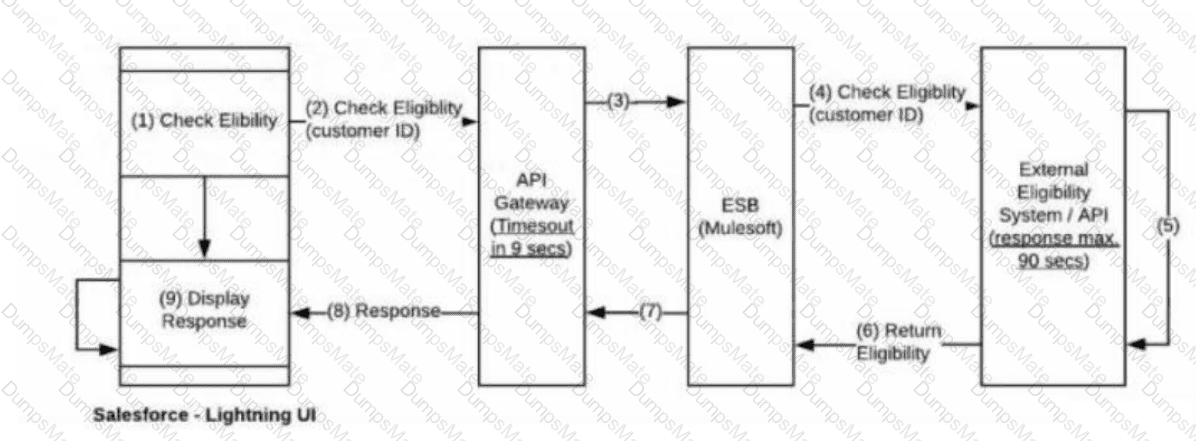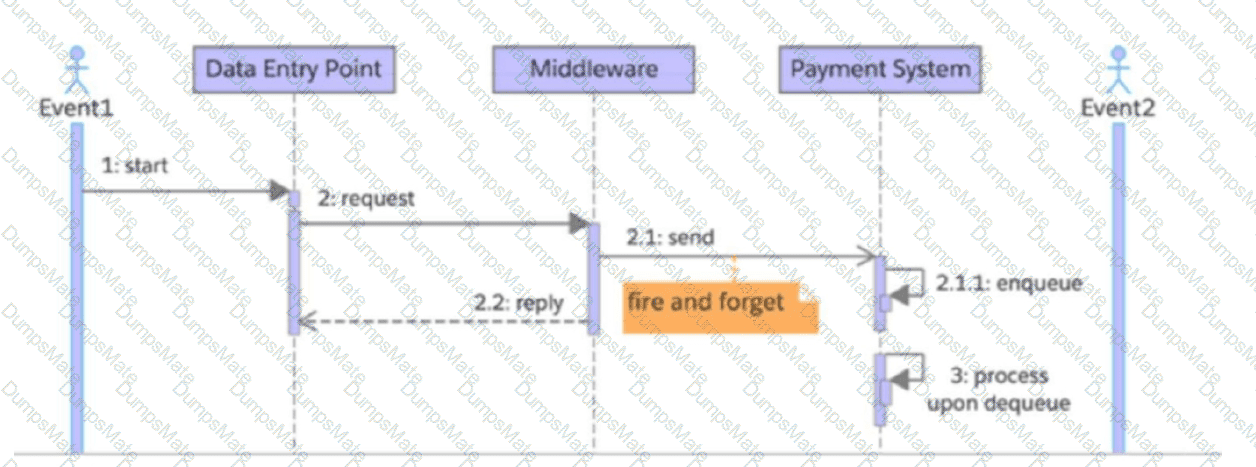An enterprise architect has requested the Salesforce integration architect to review the following (see diagram and description) and provide recommendations after carefully considering all constraints of the enterprise systems and Salesforce Platform limits.
About 3,000 phone sales agents use a Salesforce Lightning user interface (UI) concurrently to check eligibility of a customer for a qualifying offer.
There are multiple eligibility systems that provide this service and are hosted externally.
However, their current response times could take up to 90 seconds to process and return (there are discussions to reduce the response times in the future, but no commitments are made).
These eligibility systems can be accessed through APIs orchestrated via ESB (MuleSoft).
All requests from Salesforce will have to traverse through the customer’s API Gateway layer, and the API Gateway imposes a constraint of timing out requests after 9 seconds.

Which recommendation should the integration architect make?






